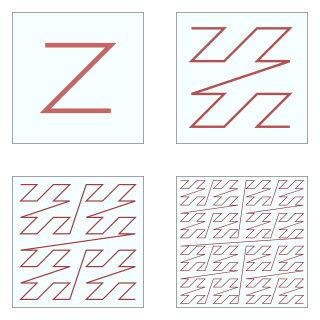 W
WIn computational geometry, the bin is a data structure that allows efficient region queries. Each time a data point falls into a bin, the frequency of that bin is increased by one.
 W
WIn computer science, binary space partitioning (BSP) is a method for recursively subdividing a space into two convex sets by using hyperplanes as partitions. This process of subdividing gives rise to a representation of objects within the space in the form of a tree data structure known as a BSP tree.
 W
WA geodesic grid is a spatial grid based on a geodesic polyhedron or Goldberg polyhedron.
 W
WIn computer science, a k-d tree is a space-partitioning data structure for organizing points in a k-dimensional space. k-d trees are a useful data structure for several applications, such as searches involving a multidimensional search key. k-d trees are a special case of binary space partitioning trees.
 W
WA quadtree is a tree data structure in which each internal node has exactly four children. Quadtrees are the two-dimensional analog of octrees and are most often used to partition a two-dimensional space by recursively subdividing it into four quadrants or regions. The data associated with a leaf cell varies by application, but the leaf cell represents a "unit of interesting spatial information".
 W
WIn data structures, the range searching problem most generally consists of preprocessing a set S of objects, in order to determine which objects from S intersect with a query object, called a range. For example, if S is a set of points corresponding to the coordinates of several cities, a geometric variant of the problem is to find cities within a certain latitude and longitude range.
 W
WA triangulated irregular network (TIN) is a representation of a continuous surface consisting entirely of triangular facets, used mainly as Discrete Global Grid in primary elevation modeling.
 W
WIn mathematical analysis and computer science, functions which are Z-order, Lebesgue curve, Morton space filling curve, Morton order or Morton code map multidimensional data to one dimension while preserving locality of the data points. It is named after Guy Macdonald Morton, who first applied the order to file sequencing in 1966. The z-value of a point in multidimensions is simply calculated by interleaving the binary representations of its coordinate values. Once the data are sorted into this ordering, any one-dimensional data structure can be used such as binary search trees, B-trees, skip lists or hash tables. The resulting ordering can equivalently be described as the order one would get from a depth-first traversal of a quadtree.